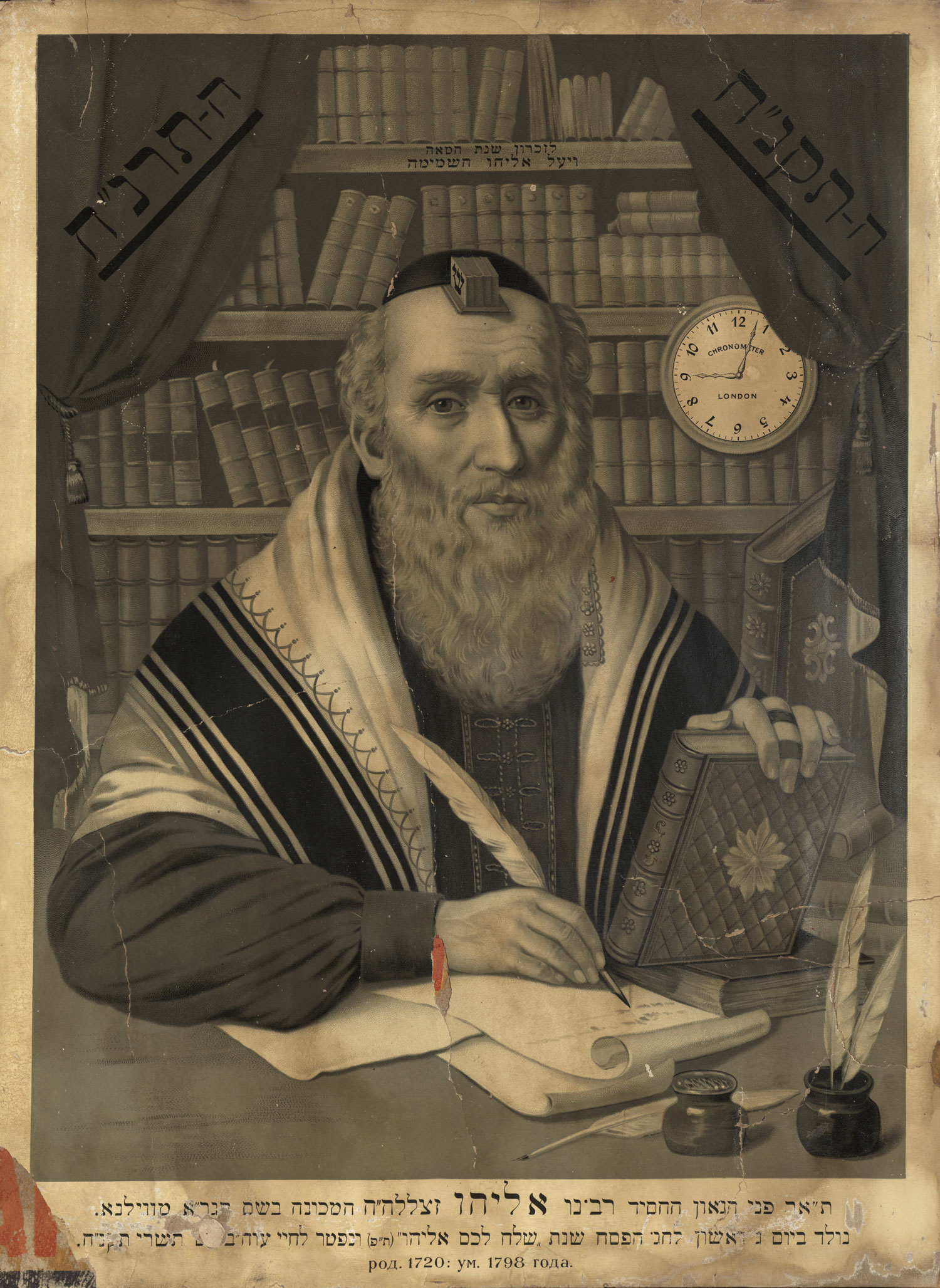This portrait of the Vilna Gaon (1720–1797) mirrors in many ways the portrayal of Rabbi Jonathan Eybeschütz (also shown in this section). Seated in his study among religious texts, wearing a prayer shawl and tefillin (phylacteries), the rabbi is treated in this portrayal with the high regard accorded a distinguished scholar. The portrait was printed in 1897, a hundred years after the revered religious leader’s death. The Hebrew text written on the bookshelf above his head tells us it commemorates the centennial anniversary since Eliyahu (the Vilna Gaon) “went up” to heaven. The Hebrew reads va-ya’al Eliyahu, the same phrase used to describe the prophet Elijah’s ascent to heaven in 2 Kings 2, implying that the rabbi might have similarly ascended. The cult built around the sanctity of the Vilna Gaon is evident in the commemorative print
The Vilna Gaon, who lived his entire life in Vilna (Vilnius), Poland (now Lithuania), was recognized as a prodigious Talmud scholar from a very young age. By the time he was 20, rabbis were regularly submitting difficult questions of halakhah (Jewish law) to him. Respect for his knowledge was widespread; when Jonathan Eybeschütz was involved in a dispute with another rabbi, he appealed to the Vilna Gaon for a decision.
The Vilna Gaon is perhaps best remembered today for the stand he took against the growing Hasidic movement and his reputation as the recognized leader of the mitnagdim, who opposed Hasidism. These traditional Jews, the Vilna Gaon among them, enshrined study of the law foremost in their Jewish observance, in contrast to the Hasidim, who deemphasized the supremacy of such scholarship. From Vilna, the rabbi asserted the tenets of orthodoxy on behalf of Jews around the world.
